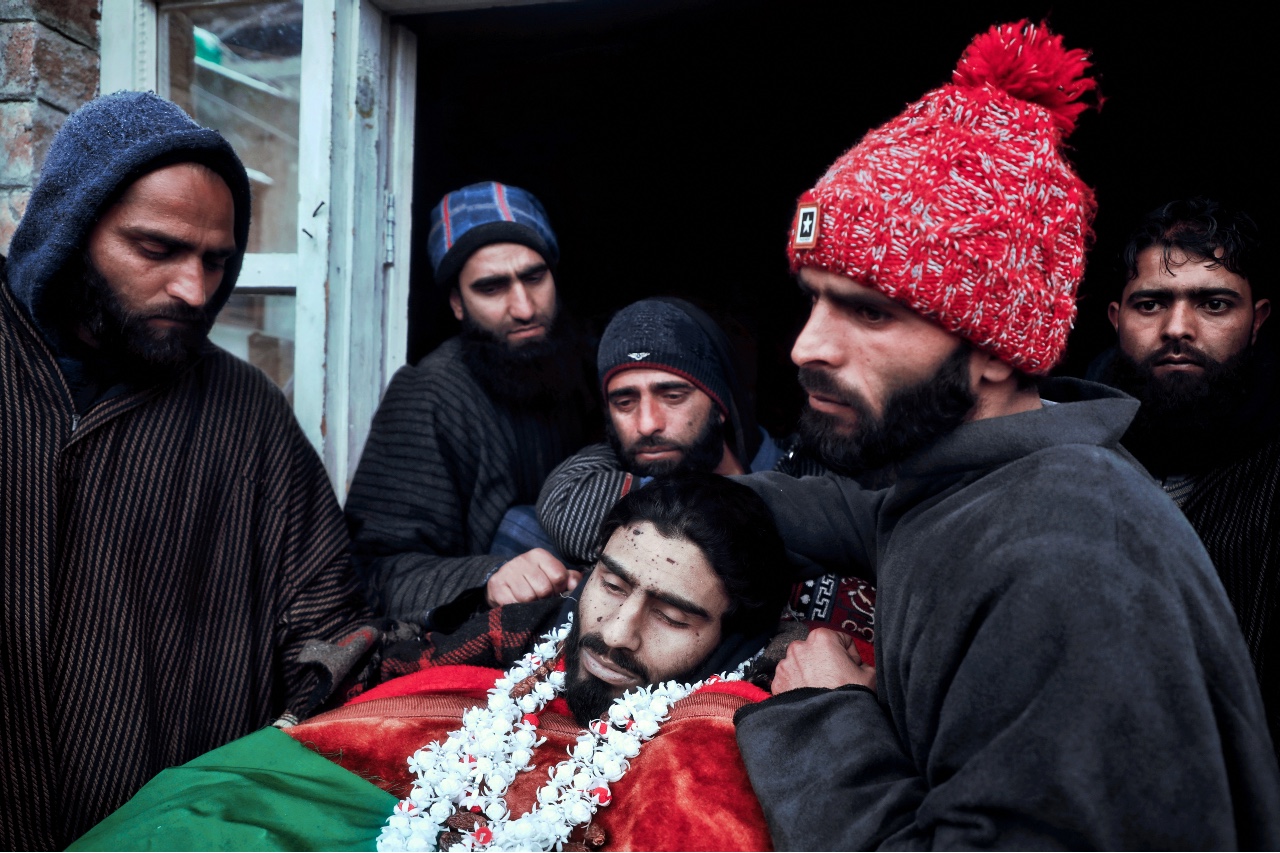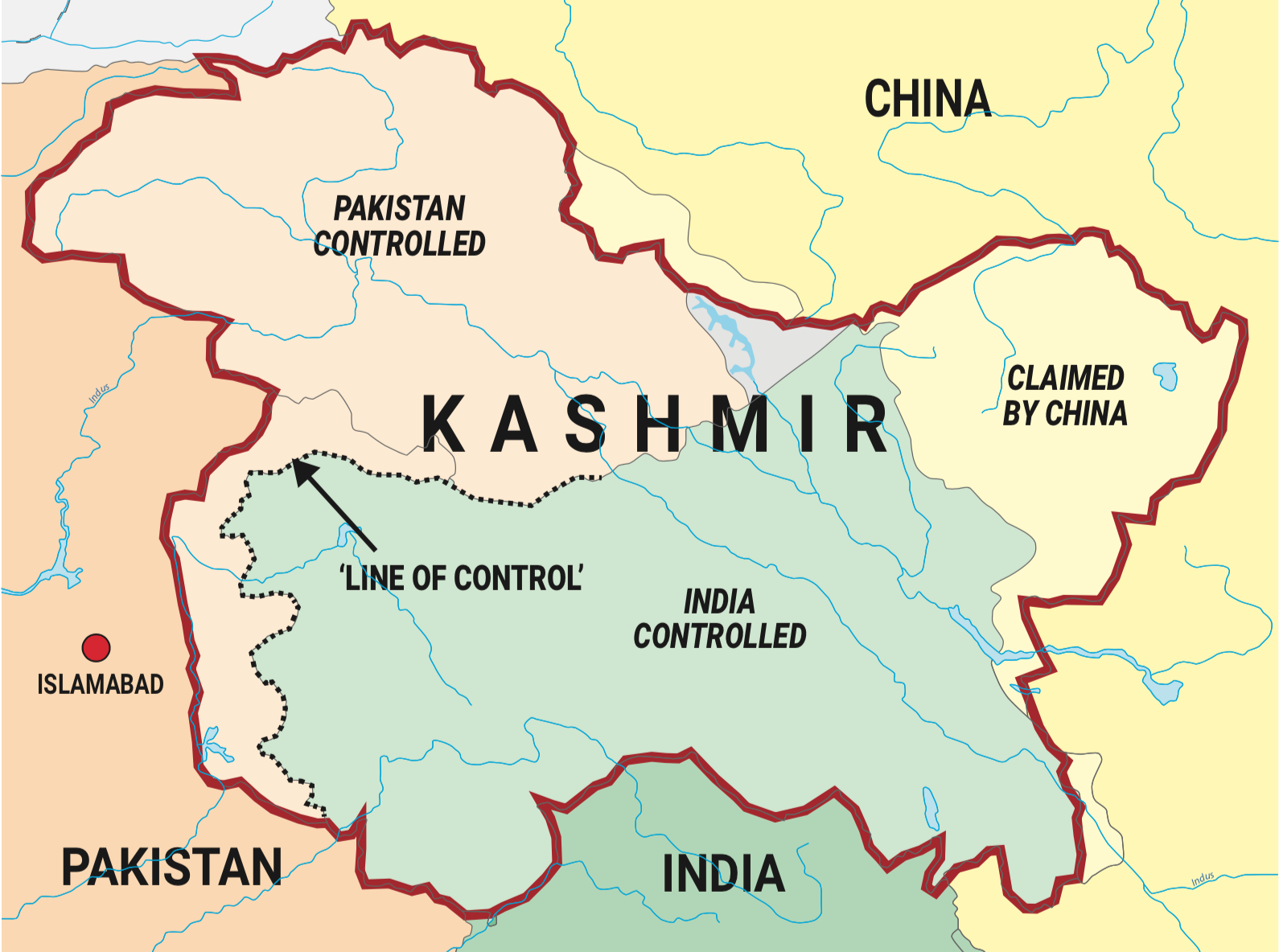
The Growing Dangers of Reporting in Conflict-Torn Kashmir
It’s never been easy to report in conflict-torn Kashmir. But the past year has seen more press suppression and interference than ever. Words and photos by Sharafat Ali, in Kashmir.
On a Monday morning in mid-April, Masrat Zahra was scrolling through Twitter during a COVID-19 lockdown in Kashmir when she came across multiple tweets about a female Kashmiri photojournalist who had been charged for terror-related activities.
Scanning the platform for more details, Zahra was shocked to discover that she was the journalist in question. The police accused the 26-year-old freelance photojournalist, who has worked with The Washington Post and Al Jazeera, of uploading “anti-national posts [on Facebook] with criminal intentions to induce the youth to promote offences against public tranquility” – a crime that carries a seven-year prison sentence.
The grounds were unprecedented. In 2018, Zahra had shared a photo of children holding the banner of a slain militant commander. The banner – and subsequently Zahra’s photo caption – read “Shaheed,” the Urdu word for martyr. Under the Unlawful Activities Prevention Act [UAPA], amended in 2019 to include special terrorism-related procedures, such language is considered grounds for treason when used to describe insurgents and armed rebels.
 Relatives mourn the death of 18-year-old rebel Shahid Ahmad, who was killed in a gunfight with Indian forces. Photo: Sharafat Ali
Relatives mourn the death of 18-year-old rebel Shahid Ahmad, who was killed in a gunfight with Indian forces. Photo: Sharafat AliTwo days later, the police summoned Zahra to a station in Srinagar, the largest city in India-administered Jammu and Kashmir (J&K). They released her after questioning but the charges remained.
A chill lingered in the air, particularly since Zahra’s case is far from unique in Kashmir, where India and Pakistan have vied for control for decades.
My own experiences with harassment include an incident in March of last year. While on assignment in Kupwara, a northern district in J&K, near the de facto border separating India from Pakistan, my local guide and I were detained without explanation for several hours.
I had pulled out my camera to capture a beautiful scene of horses running through the village’s deserted streets when several armoured vehicles pulled up.
Army personnel surrounded us, guns pointed at our heads, as I struggled to comprehend what was happening. I complied when asked for ID, explaining that we were on assignment for a freelance project.
They took us to a police station, where an officer slapped me across the face and hurled abusive remarks at us. I pleaded with them to check my work online and contact my senior colleagues to verify my identity. The situation only improved once they learned that my friend was the son of the village head. After almost seven hours, they let us go.
I have covered Kashmir for the last seven years and, like almost every journalist in the region, I’ve faced harassment many times. But the situation has worsened in the past year – harassment, suppression and surveillance have grown increasingly common as the conflict between India and Pakistan escalates.
Often called the most militarised zone on Earth, Kashmir has been hotly contested since India’s independence in 1947. At that time, the British partitioned the region into predominantly Muslim Pakistan and Hindu-majority India, leaving the princely state of J&K independent. A tribal insurgency, however, pushed J&K to ask India for help. India agreed, so long as J&K joined the country in exchange.
 While covering a 2016 protest in Srinagar, Kashmir-based photojournalist Xuhaib Maqbool Humza lost vision in his left eye after a J&K police officer fired a pellet gun at his face. Photo: Sharafat Ali
While covering a 2016 protest in Srinagar, Kashmir-based photojournalist Xuhaib Maqbool Humza lost vision in his left eye after a J&K police officer fired a pellet gun at his face. Photo: Sharafat AliConflicts between India and Pakistan continued, leading to increased terrorist activity by militant groups who oppose Indian rule, as well as civilian calls for self-determination. Today, hostilities could potentially escalate into nuclear war.
The region has long held a special semiautonomous status within India, based on Article 370 of the Indian constitution. This included its own constitution, flag, and independence over all matters except foreign affairs, defense, and communications.
But on 5 August 2019, the Indian government revoked Article 370 and permanently incorporated the territory into the rest of India. In the lead up to the announcement, the J&K administration cut off telephone networks and internet services, banned public gatherings, and deployed thousands of Indian troops to thwart protests and enforce a curfew.
The government-imposed curfew lasted almost four months. Then came a self-imposed public shutdown to protest the presence of thousands of military personnel, followed by a countrywide lockdown due to COVID-19.
Amid the crises, journalists scrambled to share the news with the world. But without stable internet connections, news agencies could not print daily papers, live stream broadcasts nor disseminate dispatches to their international desks. Farooq Javed Khan, a veteran photojournalist and president of the Kashmir Press Photographers Association, calls last year’s restrictions unprecedented. “Without communication [during the lockdown], it was difficult to work and get around,” he says.“We could not report a lot of stories.”
A government-run kiosk in Srinagar offered more than 100 journalists just four computers and a painfully slow internet connection. This chokehold on the flow of information effectively ensured sensitive photos and videos would not leave Kashmir. In June, the new administration released a new “Media Policy” and introduced an Information Department. As a de facto watchdog, the department has the right to “examine the content of the print, electronic, and other media for fake news, plagiarism and unethical or anti-national activities”, and may also take legal action should they deem any reports detrimental to national interest.
In addition, “there shall be no release of advertisements to any media which incite or tend to incite violence, question sovereignty and integrity of India or violate the accepted norms of public decency and behaviour.”
 Paramilitary forces deployed at the birthplace of young rebel Sajad Gilkar, who was killed in a gunfight with Indian forces. Photo: Sharafat Ali
Paramilitary forces deployed at the birthplace of young rebel Sajad Gilkar, who was killed in a gunfight with Indian forces. Photo: Sharafat AliUnder these conditions, the territory’s already precarious press freedoms have hit a new low, with reports of journalist detainments and arrests on the rise.
In April this year, police booked senior journalist Gowhar Geelani for “unlawful” and “anti-national activities” on social media. Similarly, police summoned Peerzada Ashiq, a journalist with The Hindu, over a story about an armed conflict between militants and security forces which contradicted police statements.
In July 2019, police detained Qazi Shibli, the editor of Kashmir-based news website The Kashmiriyat, for nine months for reporting on the military presence in the Kashmir Valley. They arrested Shibli again on 31 July this year without any charges; he was released after 18 days.
In another high-profile case, police arrested Asif Sultan in 2018 for writing a profile of a rebel commander whose death inspired several youths to pick up arms. Charged with aiding insurgents and terrorism-related activities, the journalist has been in jail for more than two years.
Kashmir is rich with stories – of tragedies, shattered dreams, resilience and, just as importantly, hope. And despite the persecution and danger that journalists regularly face, I hope one day, we can share all of these stories without fear.
 Relatives mourn the death of a rebel commander, who was killed in a gunfight with Indian forces. Photo: Sharafat Ali
Relatives mourn the death of a rebel commander, who was killed in a gunfight with Indian forces. Photo: Sharafat AliKey Events
August 1947
India gains independence, partition creates India and Pakistan
October 1947
J&K joins India to combat Pakistan-supported insurgency
1949
First Kashmir War ends after two years, India holds 65% of Kashmir, Pakistan holds remainder
1950
Article 370 in India’s Constitution secures “special status” of J&K
1965
India and Pakistan fight second Kashmir war, which ends in stalemate
1971
Third war begins
1972
India and Pakistan formalise ceasefire lines
1980s
Rise in militant groups, deaths
1990s
Discontent over Indian rule incurs protests, separatists, terrorism, nuclear weapons testing
2000s
Terrorist activity, militant attacks continue, thousands more die
2010
Anti-India protests erupt in Kashmir, following death of a young militant
2016
More protests erupt over youth deaths
2018
India declares central rule in Kashmir, terrorism continues
2019
India deploys troops to Kashmir, blocks internet, revokes “special status”
2020
Government increases media controls, military and civilian killings continue






















